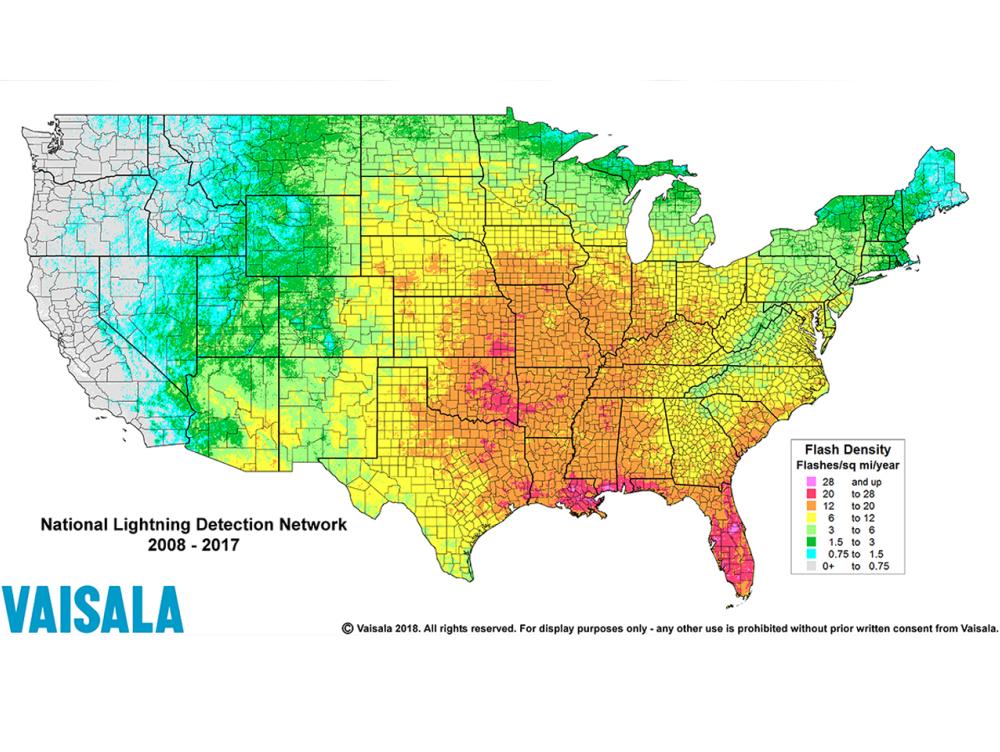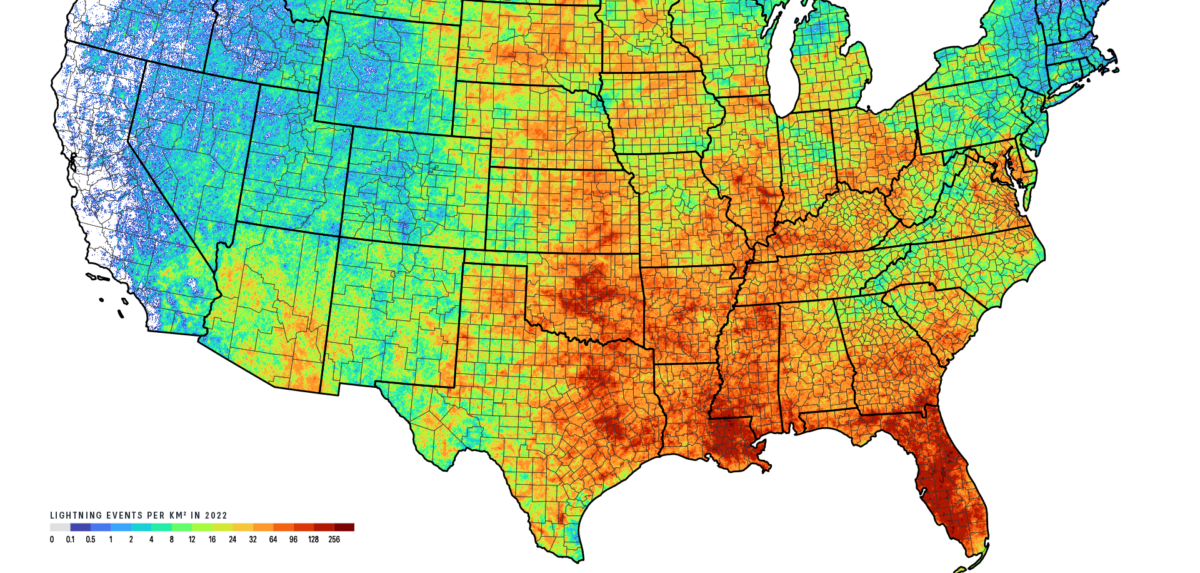Reference




OpenAI's Answer
The U.S. National Lightning Detection Network (NLDN), operated by Vaisala, is a comprehensive system used to detect lightning across the contiguous United States. Here’s how it operates:
Operation:
-
Antennae Network: The system consists of a network of antennas that detect the electromagnetic fields produced by lightning strokes.
-
Data Collection: These antennas are connected to a central processor which records the time, location, polarity, signal strength, and number of strokes for each detected cloud-to-ground lightning flash.
-
Types of Lightning: The network primarily focuses on cloud-to-ground (CG) and intra-cloud (IC) lightning flashes, mapping them in real-time.
-
Detection Process: It detects the radio waves emitted by the strokes in CG flashes, providing detailed data including the stroke time, location, polarity, and an estimate of the peak current.
-
Applications: The data is used by various sectors, including weather forecasting agencies, military bases, and research institutions, for real-time alert planning and risk assessment.
For more detailed information, you can refer to the source: Vaisala National Lightning Detection Network (NLDN).
Visual Representation:
